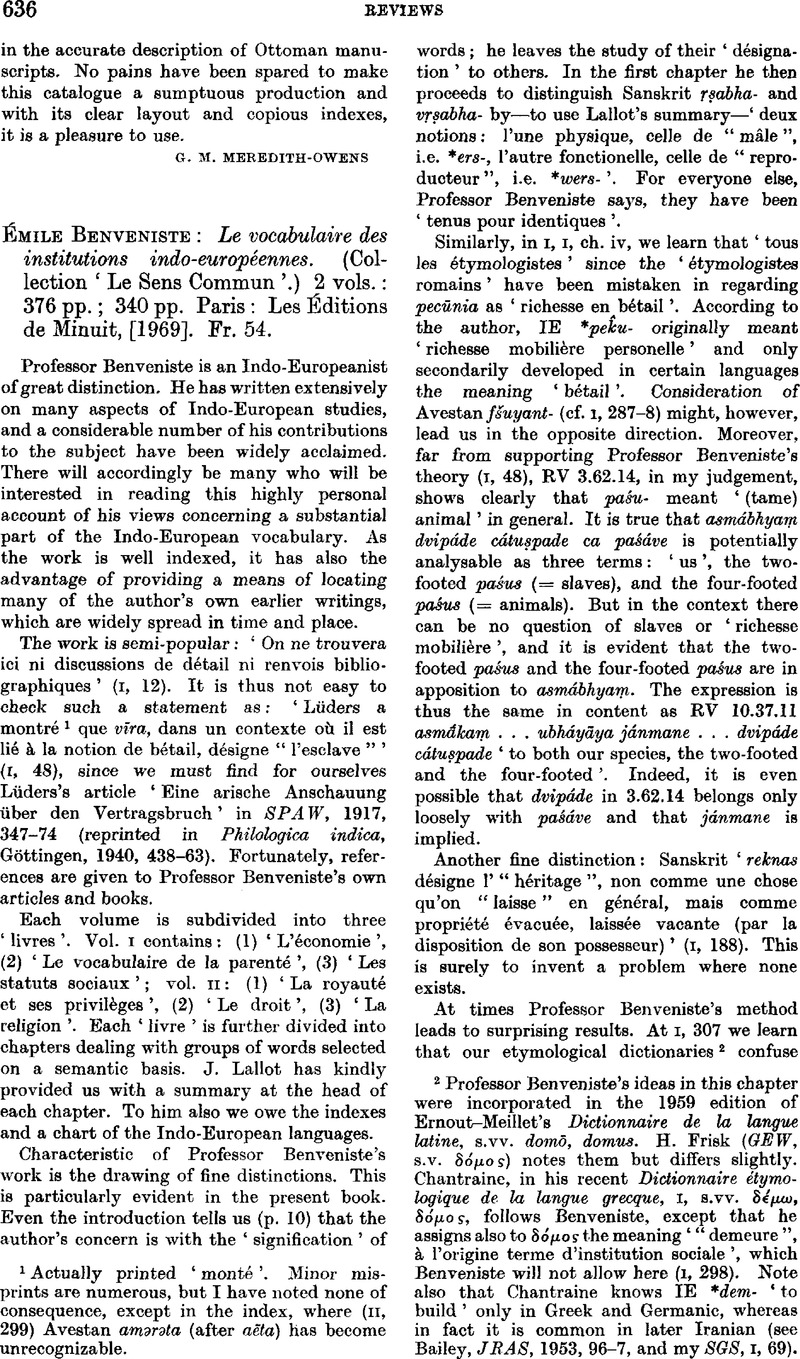Article contents
Émile Benveniste: Le vocabulaire des institutions indo-européennes. (Collection ‘Le Sens Commun’.) 2 vols.: 376 pp.; 340 pp. Paris: Les Éditions de Minuit, [1969]. Fr. 54.
Published online by Cambridge University Press: 24 December 2009
Abstract

- Type
- Book Reviews
- Information
- Copyright
- Copyright © School of Oriental and African Studies 1970
References
1 Actually printed ‘monté’. Minor misprints are numerous, but I have noted none of consequence, except in the index, where (II, 299) Avestan αmərətα (after αētα) has become unrecognizable.
2 Professor Benveniste's ideas in this chapter were incorporated in the 1959 edition of Ernout-Meillet's Dictionnaire de la langue latine, s.vv. domō, domus. H. Frisk (GEW, s.v. δόμος) notes them but differs slightly. Chantraine, in his recent Dictionnaire étymologique de la langue grecque, I, s.vv. δέμω, δόμο ς, follows Benveniste, except that he assigns also to δόμος the meaning ‘“demeure”, à l'origine terme d'institution sociale’, which Benveniste will not allow here (1, 298). Note also that Chantraine knows IE *dem- ‘to build’ only in Greek and Germanic, whereas in fact it is common in later Iranian (see Bailey, , JRAS, 1953, 96–7Google Scholar , and my SGS, I, 69).
3 On Avestan pαrəsα- ‘pig’, not mentioned bv Professor Benveniste, see Hoffmann, K., MSS, XXII, 1967, 29–38Google Scholar .
- 1
- Cited by


